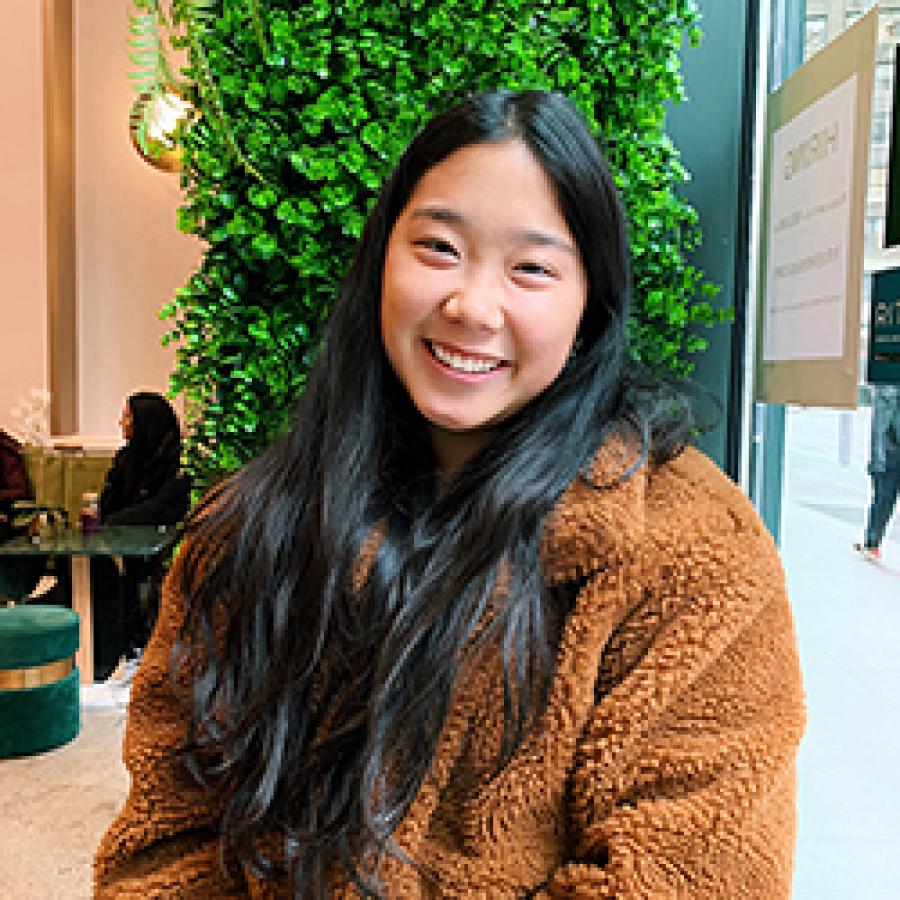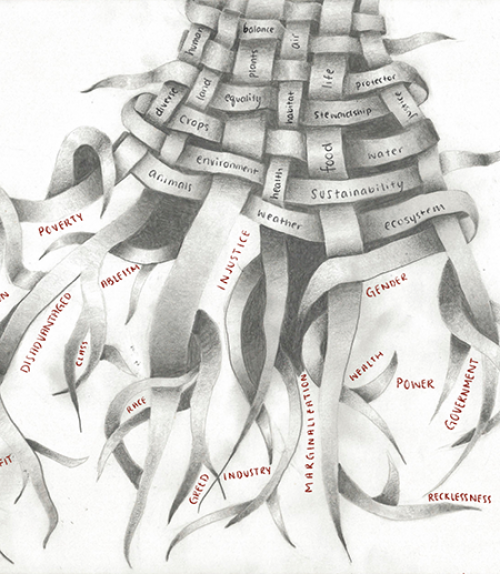Sara B. Pritchard, associate professor of science & technology studies, was determined to deeply engage with the students enrolled in her Ethics and the Environment course last spring, even though they were meeting remotely. Now, select student work from the class premieres in the Fall 2020 issue of “Minding Nature”, a journal produced by the Center for Humans and Nature released Nov. 16. The collection is called “Climate Change, Coronavirus and Environmental Justice.”
In an effort to "decolonize" the class, Pritchard assigned readings from indigenous authors Robin Wall Kimmerer and Sheila Watt-Cloutier early on. Course discussions also recognized that Cornell stands on Haudenosaunee lands, the traditional lands of the Cayuga Nation.
“I wanted Kimmerer and Watt-Cloutier to be integral voices for exploring course material from the start,” Pritchard said. “These were the first steps of many considering Cornell’s history as a land-grant and a ‘land-grab’ institution.”
These central voices, along with the theme of climate justice, formed the basis of the final assignment, which was intended to be a traditional paper. However, in the midst of the coronavirus outbreak, the course switched gears and Pritchard began to rethink the final assignment.
With the help of her teaching assistants, Ph.D. candidates Rebecca Harrison and Amanda Domingues, Pritchard gave students the option to choose between tackling course ideas creatively or in an essay format.
“The decision came naturally,” Pritchard said. “It seemed like a lot to ask students to go through all the normal hoops when we aren’t living in normal times. I felt that this creative project option would speak to some students – that it would allow them to be inspired and maybe even get more out of the course.”
The opportunity to pursue this outlet appealed to students like Renee Lee ’21.
Pritchard, Harrison and Domingues were moved by the quality of the final creative submissions, which were thought-provoking, provocative and bold.
“The students were able to turn abstract ideas into a poem or an image, all with clever and original approaches,” Pritchard said.
Harrison echoed this sentiment.
“I was most blown away by our students’ ability to connect their lived experiences during the pandemic with complicated course topics like social inequality and climate justice,” Harrison said. “Many of our students embraced their vulnerability and used this project as almost a tool for catharsis, which demonstrated a degree of intellectual maturity I was so proud of.”
Not wanting this work to be forgotten, Pritchard, Harrison, and Domingues decided to pitch a few student pieces – three poems and six works of visual art — for publication. The journal “Minding Nature” was eager to feature the collection and the three instructors worked as co-editors, helping students to polish their creations before undergoing further revision with the journal.
Every piece was accompanied by an artist statement meant to inform readers about the concepts explored in each artwork.
“I want people to understand that there is an urgency for systemic change in order to re-weave ourselves into the environment in a sustainable and equal manner,” said Lee, whose art appears in this collection. Her submission, “Interwoven,” was visually influenced by basket weaving and tree roots.
“I used a basket weave to show how interwoven we are with the environment,” Lee said. “The main takeaway that I got from this class was how interconnected we are with the Earth. I thought that a basket weave in the shape of tree roots would portray this idea well.”
Pritchard said the creative projects serve as great reminders of how excellent undergraduate work can be.
“It reminds me that my students are also teachers. There is a back and forth. I was impressed by these students’ perspectives and the connections they made,” Pritchard said. “Putting this collection together also showed me how great it is to reward student contributions. Student work often dies at the end of the semester. It is nice to know that this collection will now live in the wider world.”
Although a big commitment, Pritchard challenges her colleagues to consider pursuing publication with top undergraduate assignments. She and Harrison also hope readers and viewers will learn from course concepts running throughout the collection and be moved.
“I hope our audience can share in this catharsis. This work raises really complicated questions that we don’t have easy, technological fixes to,” Harrison said. “But this collection also has a sense of optimism.”
“Climate Change, Coronavirus and Environmental Justice” can be viewed here.
Amaris Janel Henderson is a communications assistant for the College of Arts and Sciences.





